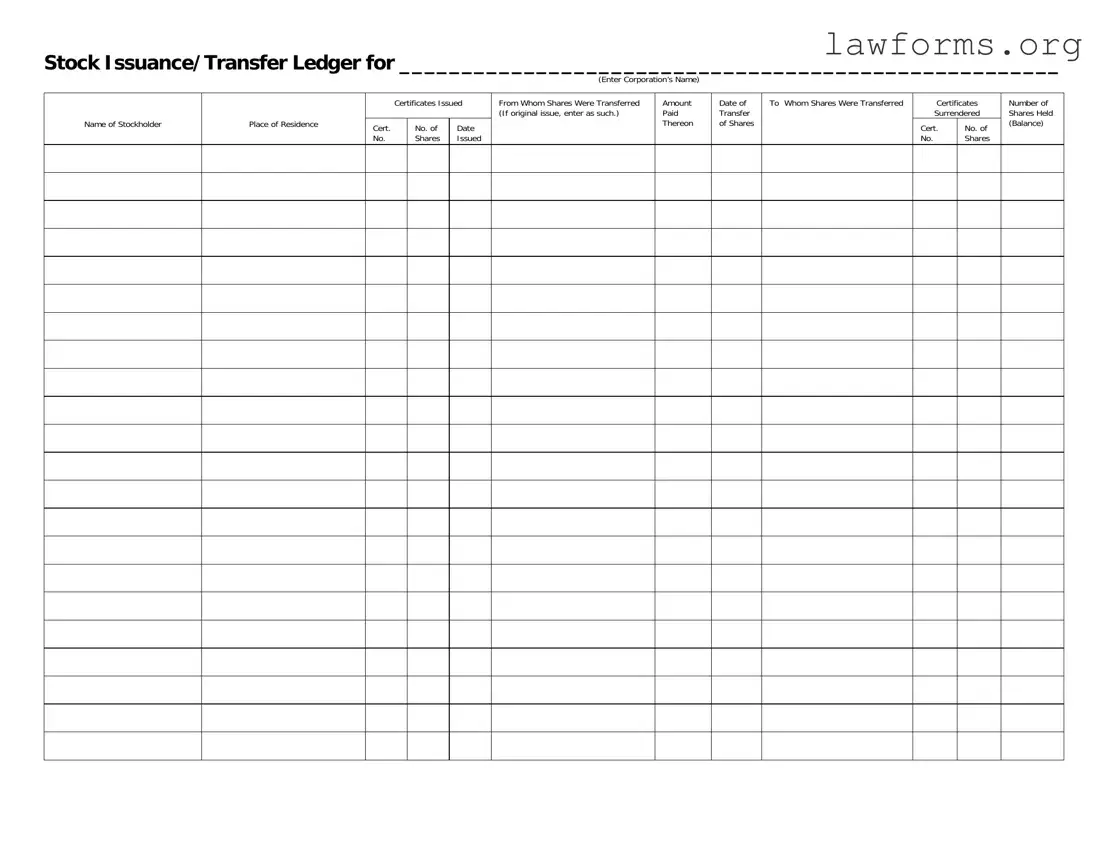Fill Out a Valid Stock Transfer Ledger Template
The Stock Transfer Ledger form is a crucial document used to record the issuance and transfer of stock within a corporation. This form tracks essential details such as the stockholder's name, the number of shares issued, and the dates of transfer. For accurate record-keeping and compliance, it’s important to fill out this form correctly; start by clicking the button below.
Customize Document Online

